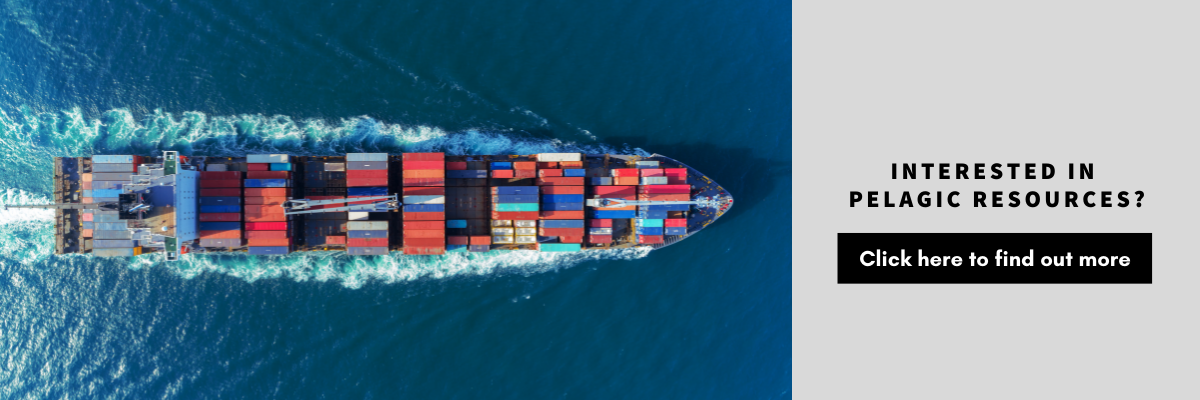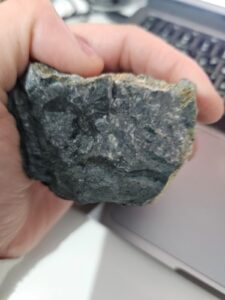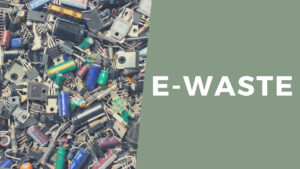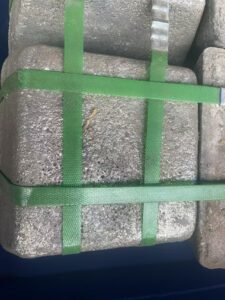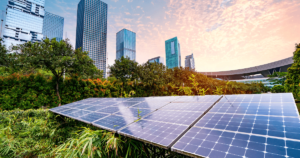The green revolution is here, and battery metals are on the podium
While the last mining boom had front-runner bulk commodities like iron ore and coking coal, the new age battery and green energy metals are set to enter medal position this time around. As the energy revolution continues to unfold, battery and green energy metal-backers are becoming increasingly aware of the need to secure these raw materials in order to accomplish their ambitious electrification goals.
Singapore-based Pelagic Resources Ltd (Pelagic) has been touted as an excellent partner to develop a business of battery metal supply in southern Africa. The company has its roots in South Africa trading chrome ore and has now expanded its metals portfolio to include PGMs through its relationship with Bauba Resources and vanadium via Vanadium Resources Limited (ASX:VR8). Pelagic will introduce VR8 to its existing customer base in China, Europe, Russia, India and the US, aiming to bring about a transaction whereby end-user capital is strategically deployed in developing VR8’s Steelpoortdrift Vanadium Project and the production of vanadium pentoxide (V2O5) products.
The battery metals arena
To fully appreciate the battery metals race, we need an overview of the arena. Europe is injecting trillions of dollars into its economy to encourage the uptake of electric vehicles and a rapid shift to renewable energy, as well as secure its supply chain and reduce its reliance on China. Earlier this year the European Commission unveiled a historic, one-off EUR750-billion (USD1.2-trillion) package to help aid the EU’s economic recovery. Called Next Generation EU, this cash injection could fast-track the nascent electric vehicle ramp up in Europe, one of the world’s biggest car markets. What is reflected here is that there’s a real switch to these important metals, such as lithium, nickel, vanadium and the rare earth elements.
Experts anticipate that vanadium, which is used mainly as an alloy in steel manufacturing, will see an uptick in demand thanks to its increased use in the energy storage sector. Vanadium’s meteoric rise has piqued the interest of analysts and investors who see the value in a battery metal that is safer, longer-lasting and more durable than lithium.
Vanadium flow batteries – expected to be a billion dollar market by 2025
Vanadium is quickly gathering speed: Flow batteries look set to play an important part in the development of the global renewables market, which itself is expected to reach a size of USD1.5-trillion by 2025. According to a report from Markets and Markets, the flow battery market, valued at just USD187-million in 2017, is projected to reach USD946-million by 2023. This represents a CAGR of 32.7% between 2018 and 2023.
The increase in consumption was primarily driven by the Chinese Government’s stimulus for infrastructure spending, as well as increased intensity of use of vanadium in steel, as enforcement of rebar standards improved during 2020. According to Roskill, vanadium demand in the steel market will grow at a CAGR of about 2.7% through to 2030, with global vanadium demand from steel reaching approximately 136,000 tonnes by 2030.
Vanadium battery technology looks to be critical in terms of the capital cost of energy storage, due to its high efficiency, superior energy density, and most importantly, lengthy lifespan. Low-cost energy storage is going to be very important in the years to come, with vanadium redox flow batteries considered to be one of the lowest cost means of storing electricity effectively in a localised fashion. Energy companies are seeking infrastructure solutions like this that can help them to build a grid that operates cheaply and reliably, and where batteries using expensive vanadium can be counted on to last for years.
Vanadium enjoys an edge over lithium in its scalability as well: if large projects like mines, or remote settlements, or cities are going to fully enjoy the benefits of clean energy technology, then the vanadium flow battery is more likely to hold the answer.
Pelagic’s place in the world vanadium supply
The world vanadium market is sustained by a limited number of mines, with a small number of others coming online soon. Nearly 85% of all vanadium currently comes from Russia, China, and South Africa. Since Chinese sources are highly polluting and new environmental regulation limits their production, this is going to eventually place a premium on vanadium and vanadium mining companies – and South African mines will be in an advantageous position to supply vanadium to the Chinese market.
Pelagic and VR8’s peloton has a strong South African contingent with both Bushveld Minerals (LON:BMN), and Sibanye-Stillwater (JSE:SSW) in the pack. Bushveld Minerals has been investing in its vanadium processing capabilities and participates in the global value chain for energy storage through the supply of vanadium mined by the Group, electrolyte that will be produced by the Group and investment in battery companies and manufacturing. In addition, Bushveld has a deployment business that focuses on the African market, which is traditionally under-served but offers immense growth potential.
The management teams of VR8 and Pelagic are jointly exploring various strategic partnerships for the development of VR8’s Steelpoortdrift Project and eventual advancement into production, and once construction is completed and production is underway, VR8 aims to become a key supplier of vanadium products to global markets. Market forecasts suggest that there will be an addition of 1,200 GW of battery capacity by 2050, and VR8 could add up to 10,000 tonnes of vanadium to the undersupplied market.
Riding alongside Bushveld and Pelagic on the vanadium team, is Sibanye-Stillwater – on the lithium team. Sibanye-Stillwater has entered into an exclusive agreement with French firm Eramet SA for the full acquisition of the Sandouville nickel hydrometallurgical processing facility for around EUR65-million (R1.126-billion), in what would increase its footprint into the lucrative battery metals sector.
With a core focus on metal ores used in the stainless and speciality steel industries, Pelagic has marketed over 1 million tonnes of metal concentrates to China, Europe, Russia, India and the US. Pelagic works strategically with several large International Physical Commodity Merchants, Chinese State-Owned Enterprises and Global Asset Allocators, and is well-positioned to strategically align development capital with resource projects in Africa. And right now, Pelagic is riding high on the battery metals supercycle with its alignment with SA’s largest greenfield vanadium project, VR8, and its stake in Bauba Resources.
To learn more about Pelagic Resources, click here.


